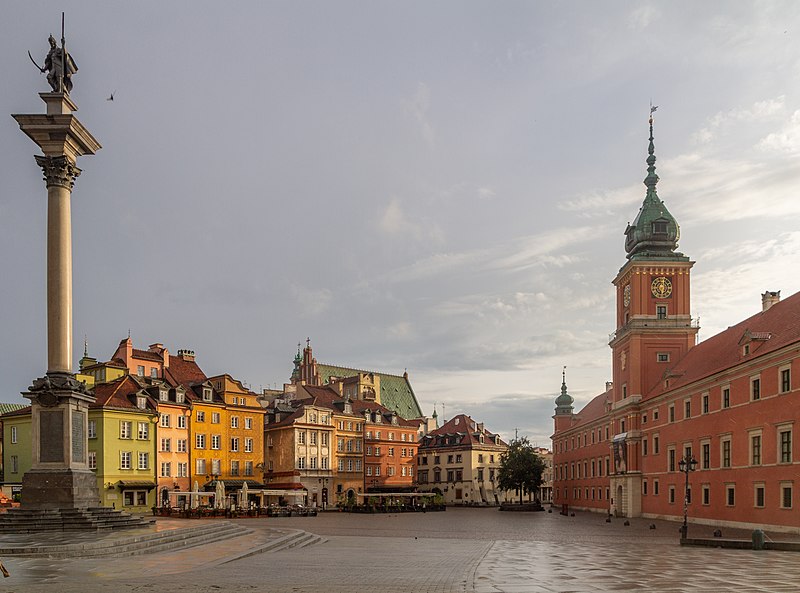The latest book review from Mr. and Mrs. Psmith’s Bookshelf examines Tristan Gooley’s How to Read a Tree:
Okay, I admit it: I read this book because I wanted to know more about the trees in my yard.
I’m afraid that’s not how Tristan Gooley means it to be used. He’s an expert in what he terms “natural navigation“, which means finding your way wherever you’re going using the sun, moon, stars, weather, land, sea, plants and animals. He teaches classes in it. He tested Viking navigation methods in a small boat in the north Atlantic and wrote a scholarly paper about it. He traveled the desert with the Tuareg. He’s the only living person to have crossed the Atlantic solo in both a plane and a sailboat.1 Meanwhile, I consistently walk a block in the wrong direction when I come out of the subway. But I am interested in trees!
Do you think much about trees? Could you draw one from memory and come up with something besides a fat green lollipop? Can you describe a tree you walk past every day with something more than its species and “leaves turn a pretty color in the fall” or “had its whole middle chopped out because planting trees directly under power lines is a terrible idea”? (Or if you live somewhere urban enough to have buried power lines, “they really, really should have made sure all these ginkgos were male”.)2 My guess is that you can’t, because most of us couldn’t, but trees deserve some real thought. They are actually fabulously, unintuitively weird, and learning just a little bit about how they work will dramatically enhance your ability to understand why the world around you is the way it is. I don’t expect I’ll use a tree to find my way any time soon, but since reading the book I’ve started spotting things in my yard and my neighborhood that I’d never noticed before — and noticing things is halfway to understanding them. (Which is, of course, why you must not be permitted to notice that which you are not supposed to understand.)
The most fundamental insight here is that trees are not like animals. This sounds breathtakingly obvious (and indeed, when I shared this pearl of wisdom at the dinner table everyone laughed at me), but it’s hard to internalize. Our increasingly urbanized and domesticated lives have so impoverished our natural imaginary — the available stock of symbols, metaphors, and archetypes through which we understand the natural world — that we’re more or less limited to commensals and charismatic megafauna, and are therefore vaguely surprised when we encounter organisms that work differently.3 And trees really do work differently, in a wide variety of ways that make perfect sense when Gooley points them out.
What are these differences? Well, for one thing, where animals have their physical architecture written into their genes, trees — like all plants — have potential. Sure, they have general growth habits4 (you’d never mistake a willow for a maple), but compare two trees of the same species — even two genetically identical trees cloned from grafts or cuttings of the same parent — and you’ll find dramatic structural differences depending on how the individual tree grew. This isn’t true for animals: one lion might be smaller than another, or bear the scars of an old injury, but all lions have four legs with the same joint anatomy. A lion will never grow a new leg, drop an old one, or add new tendons to support a particularly overworked limb. Trees, on the other hand, do all of those and more, following general rules dictated by species but growing in response to the conditions they encounter. And because only the top of the tree continues to grow up — a branch five feet off the ground will still be five feet off the ground in a decade, though quite a lot thicker — you can read a tree’s whole history in its structure. As with looking at a genome, looking at a tree is a way of looking into the past.
Trees seek the light. Just down the street, my neighbor’s entire front yard is shaded by three enormous oak trees planted in a rough triangle and each arching gently away from the others (with a surprising similarity to the Air Force Memorial) as they try to escape each others’ shade. A few blocks away is a survivor of a similar situation, an old pine tree that’s branchless most of the way up its trunk so you can really see the alarming 15° lean with which it grew. Some long-gone giant cast the shade that sculpted this tree into its present funny shape, and if we were in the woods we might be able to see its stump — Gooley encourages the reader to greet a woodland stump by looking for the “footprint” of the missing tree in its surroundings — but I suspect this one was probably removed to make way for the foundation of the nearby house. (Given the apparent age of the pine and the house, its old neighbor probably met its end around the time the new streetcars turned this farming village on a railroad into a proper suburb.)
1. The late Steve Fossett did it first, but since he holds about a billion other records it feels churlish to take this from Gooley.
2. Only female gingkos drop those awful berries. There are entire all-male cultivars that make fabulous trees, and somehow, inexplicably, I spent every autumn of my childhood scraping horrible stinky mush off the bottoms of my shoes. Why.
3. Also on this front, I recommend Merlin Sheldrake’s Entangled Life, which is exactly the sort of book about fungi you would expect someone named Merlin Sheldrake to write.
4. In fact “tree” is really just a growth habit, evolved independently by thousands of unrelated species of plants, because trees are the crabs of the plant kingdom. [NR: Do read that thread, it’s quite amusing}














